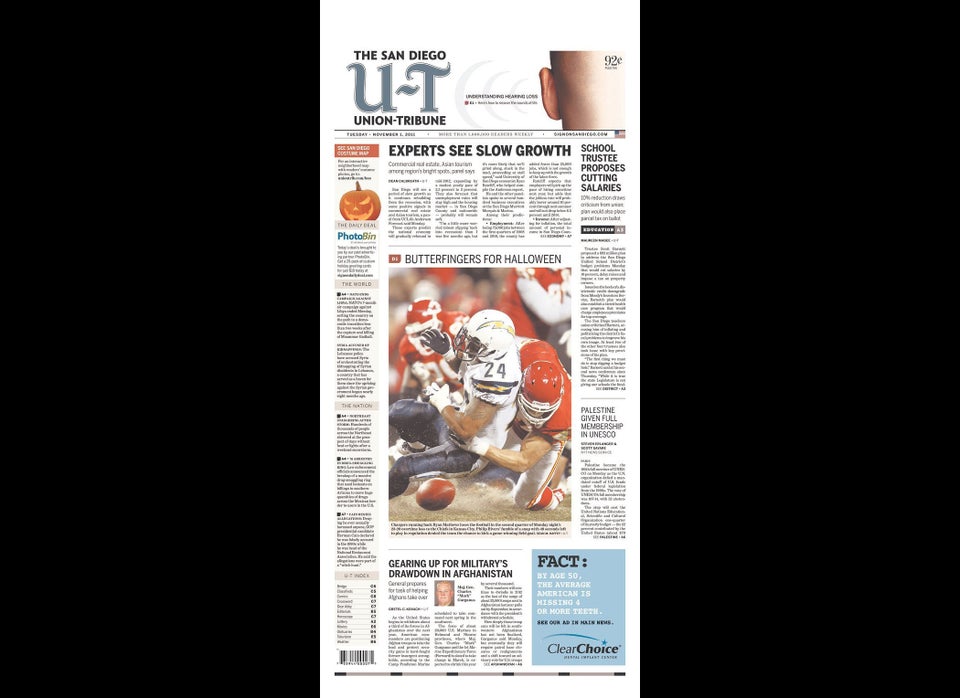
The New York Times has proposed new terms of a potential contract for its union employees, saying that "the ball is the Guild's court."
The paper's management and members of the Newspaper Guild have been engaged in a contentious battle over a new contract for over a year. The tensions became increasingly public after hundreds of staffers signed an open letter expressing their "profound dismay" with the company's calls to freeze their pensions plans and end their independent health insurance.
Terry Hayes, the paper's senior vice-president of labor, outlined proposed changes to the terms in a memo on Monday. The revised proposal would allow employees to keep the Guild's health care plan. It would also offer Guild members a 1% raise with a 1% bonus in the second year, and drop a plan to extend the work week from thirty-five to forty hours.
Still, Hayes recognized that members' pension plans remain a major sticking point in the talks. He stressed the need for cost-cutting measures, citing difficult economic times at the paper. "No business can face a decline of this magnitude without taking steps to bring its costs into line with the smaller revenues," he wrote.
The Newspaper Guild responded to the proposal on Tuesday, calling it "slightly less offensive" but expressing deep dissatisfaction with the terms.
This latest development comes as tensions have heated up in recent weeks. Employees openly protested the negotiations outside a meeting of top editors at the end of February. The Guild also expressed its outrage at a huge $24 million payout for former CEO Janet Robinson in January.
Below, read the full text of Hayes' letter (via Romenesko).
March 26, 2012
Message from Terry Hayes: Update on Guild Negotiations
Today, the Company put a new, comprehensive proposal on the table for renewing and extending the Guild contract. While we normally believe that bargaining is best done at the bargaining table, I wanted to take a moment to explain this proposal directly to you, and to tell you what it means and how we got here.
While this proposal does not address every Guild member’s concerns, particularly on the pension, it does reflect significant change from the Company’s original proposal, a year ago:
• We are no longer proposing to end the Guild medical plan and put Guild employees in the excluded plan. While this proposal was intended to help Guild members, many of whom pay much more for their medical coverage than comparably situated managers do, we have heard, and agreed to, the Guild’s plea to retain an autonomous plan, and would contribute additional money to the Guild’s plan instead.
• We are offering a 1 percent raise upon ratification, and a 1 percent bonus payment in the second year of the contract, which would run until March 30, 2014.
• We are no longer proposing to extend the work week to 40 hours at no additional pay. Rather, everyone would work 35 hours for the same weekly pay rate they now have. Hours between 35 and 40 would be paid at straight-time rates. This proposal will cost us money, especially on the digital side where eight-hour days are the norm (as they are in much of the world outside The Times), but we have heard the Guild’s objections, and are willing to incur that cost to get a negotiated agreement.
• We have withdrawn our proposal to eliminate night and lobster differentials. Employees who work nights will continue to get differentials, calculated the same way they are now.
• We have withdrawn our proposal on subcontracting and modified our proposals on job security and layoffs.
• And, as well, our proposal incorporates all of the tentative agreements reached by Guild and Company negotiators meeting in small committees over the last nine months, on subjects like job descriptions, interns and intermediate journalists and temporary and casual workers.We are making these changes to our proposal because we’ve heard what you had to say, at the bargaining table and beyond it, over the past year.
One thing, though, remains just as true today as it was then: While The New York Times, in print and online, continues to be a marvel of American journalism, the economics of the business are challenging, and have been for some time. Despite the success of the pay model, and the hard work of Guild members and excluded managers alike, New York Times Media Group revenues declined 22 percent during the term of your last contract, from 2003 to 2011.
We wish this weren’t true, but it is. No business can face a decline of this magnitude without taking steps to bring its costs into line with the smaller revenues. Over the last few years, we’ve reduced staff, tightly controlled nonpayroll expenses and eliminated some unprofitable operations, and froze defined pension plans for non-union employees. The Guild did participate with us when we sought a temporary 5 percent payroll reduction in 2009 as part of this effort, and we deeply appreciate it.
Nevertheless, we have to do more. To ignore it would be to put The Times itself, and all of our jobs, at risk. And the most important thing we can do is to eliminate the expense, risk and volatility of the defined-benefit pension plans many of our employees have enjoyed over the years. In doing this, we are acting no differently than most other employers in America — as The Times itself reported a few weeks ago, only 14 percent of employees throughout the country still have defined-benefit pension plans. They are great for employees, but they are, sadly, unaffordable.
The Guild is not being singled out. We froze the non-union pension plan two years ago, and have been working with the craft unions to do the same. Freezing the plan will have no effect on the pension credits that an employee has accrued prior to the date of the freeze. As was done with the non-union plan, the frozen pension is replaced with an enhanced 401(k), and we today proposed contributing between 3 percent and 5 percent of salary, depending on years of service, in new money to every Guild employee’s retirement account, in addition to the match of up to 3 percent of salary that the Company already provides. The new money would be paid whether or not Guild members contribute to the 401(k) from their own salaries.
It has been nearly a year since the Guild contract expired. To say we are disappointed in the lack of progress since then only begins to scratch the surface of it. Despite all the hard work and tentative agreements by the small committees, we have yet to address the Company’s legitimate needs on significant issues such as the pension.
We look forward to negotiating with the Guild on the basis of this proposal. There may be room for improvements in some areas if we can come to a satisfactory agreement on the pension freeze. But the ball is now in the Guild’s court to respond to this good-faith effort.
Terry L. Hayes
Senior Vice President, Operations and Labor
The New York Times Media Group
